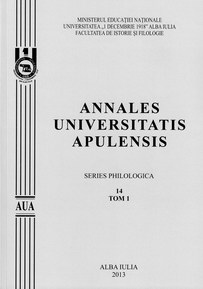Dimension verticale et dimension horizontale dans l’interprétation du sens sémantique
Vertical and Horizontal Dimensions in the Interpretation of Semantic Meaning
Author(s): Oana Maria PăstaeSubject(s): Language and Literature Studies
Published by: Universitatea »1 Decembrie 1918« Alba Iulia
Keywords: horizontal dimension; vertical dimension; basic level; cognitive category; prototype
Summary/Abstract: Our study is based on the theory of Rosch according to which people categorize items and concepts based on a prototype or ideal representation of the category. If the semantic categories are categories of language which represent the division of the meaning of a word, the cognitive categories are categories of thought. The fusion of linguistic and cognitive fields leads us to define the semantic category as the mental representation or mental image of individuals’ accumulated world experiences. Rosch offers a new vision of the categories where concepts are organized in two dimensions: a vertical dimension and a horizontal dimension. The horizontal dimension deals with the distinction between the concepts that are at the same level of inclusion. The vertical dimension refers to the level of inclusion in the category and to its level of generality. The vertical dimension is much less spectacular than the first (Kleiber, 1991) and implies a hierarchy of categories. Using the prototype theory, this study aims at finding which the most representative members of the category flower are. Even if the theory of Rosch did not answer the fundamental question: why do we class an object in a particular category ? it is still relevant in cognitive semantics.
Journal: Annales Universitatis Apulensis. Series Philologica
- Issue Year: 14/2013
- Issue No: 2
- Page Range: 375-386
- Page Count: 12
- Language: French

